Monday, 29 November 2021
PM
TUT-01: Orthogonal Time Frequency Space (OTFS) Modulation and Applications
TUT-02: Integrated Approach to Modern SatCom
Tuesday, 30 November 2021
AM
TUT-03: 5G Demystified: Architecture and Technologies
TUT-04: Interdisciplinary Approach to Resilient Cyber-Physical Systems: State of the Art and Future Challenges
PM
TUT-05: The Things We Ought to Know About OFDM or How to Battle the Awful Effects of Multipath Distortion
TUT-06: Private Edge Cloud for IoT and 5G Network Applications
Wednesday, 1 December 2021
AM
TUT-07: A Survey of Advances in Deep Model Explanation Techniques
TUT-08: Cognitive EW: An AI Approach
PM
TUT-09: How to Synchronize Carrier Frequency, Carrier Phase, and Symbol Timing Loops in Modern Digital Modems
TUT-10: Next Generation PNT Systems in 5G Ecosystems and Beyond
TUT-01: Orthogonal Time Frequency Space (OTFS) Modulation and Applications
Author: Emanuele Viterbo, Yi Hong, Tharaj Thaj
Date/Time: Monday, 29 November 2021/PM
Room: Pacific 25, First Floor (Ground Level)
Abstract: Emerging mass transportation systems – such as self-driving cars, high-speed trains, drones, flying cars, and supersonic flight – will challenge the design of future wireless networks due to high-mobility environments: a large number of high-mobility users require high data rates and low latencies. The physical layer modulation technique is a key design component to meet the system requirements of high mobility. Currently, orthogonal frequency division multiplexing (OFDM) is the modulation scheme deployed in 4G long term evolution (LTE) mobile systems, where the wireless channel typically exhibits time-varying multipath fading. OFDM can only achieve a near-capacity performance over a doubly dispersive channel with a low Doppler effect, but suffers heavy degradations under high Doppler conditions, typically found in high-mobility environments. Orthogonal time frequency space (OTFS) modulation has been recently proposed by Hadani et al. at WCNC’17, San Francisco. It was shown to provide significant advantages over OFDM in doubly dispersive channels. OTFS multiplexes each information symbol over a 2D orthogonal basis functions, specifically designed to combat the dynamics of the time-varying multipath channels. Asa result, all information symbols experience a constant flat fading equivalent channel. OTFS is only in its infancy, leaving many opportunities for significant developments on both practical and theoretical fronts.
TUT-02: Integrated Approach to Modern SatCom
Author: Mike McLernon, Idin Motedayen-Aval, Phillip Henson
Date/Time: Monday, 29 November 2021/PM
Room: Pacific 26, First Floor (Ground Level)
Abstract: This tutorial will cover the fundamentals of satellite communications. We will start with orbital mechanics and simulation technology, then we will cover some common Sat Com standards, and we will add RF and antenna array design considerations. We will conclude the session with a talk on the use of commercial off-the-shelf software-defined radios (SDR) in prototyping and testing wireless systems (focus on Ettus/USR Pradios). What you will learn in this tutorial will help you better understand, model, simulate, test, and prototype satellite communication systems.
TUT-03: 5G Demystified: Architecture and Technologies
Author: Jack L. Burbank
Date/Time: Tuesday, 30 November 2021/AM
Room: Pacific 25, First Floor (Ground Level)
Abstract: This tutorial aims to provide attendees a solid understanding of the emerging Fifth-Generation wireless communications architecture. The tutorial will discuss the various technologies that will compromise the overall 5G network architecture and how these technologies are either complimentary or competitive in nature. This tutorial will provide attendees with a strong familiarity of 1) the emerging 5G cellular standards as defined in3GPP Release 15, 16, and 17, and 2) key IEEE 802.11 technologies that are emerging to support 5G usage cases. A particular focus will be spent on IEEE 802.11ax, or "WiFi 6."Discussion will also include future WiFi 7 technologies, such as IEEE 802.11be.
TUT-04: Interdisciplinary Approach to Resilient Cyber-Physical Systems: State of the Art and Future Challenges
Author: Miroslav Pajic, Saman Zonouz
Date/Time: Tuesday, 30 November 2021/AM
Room: Pacific 26, First Floor (Ground Level)
Abstract: Cyber-Physical Systems (CPS) are 'cyberized' physical systems in energy, transportation, manufacturing, health, and many other sectors. 'Cyberization' brings sensing, networking, and computing to improve the cost, performance, and safety of physical systems. It also leads to increased automation of physical systems. Civilian as well as military systems have benefitted from this cyberization over the last two decades. On the other hand, integration of cyber and physical bring novel problems and enable novel solutions for security researchers and practitioners. CPSs connect computerized controllers and human supervisors with physical systems. These can be attacked from cyber or physical domain as well as jointly from both domains. They can also benefit from sensors in both domains. Real-world major attacks against CPS, starting from Stuxnet in 2010 to U.S. Colonial pipelines attack in 2021, have prompted unprecedented investigation into new threats and mitigations against CPSs. In this tutorial, we provide an introduction to the control systems used widely in CPSs, emerging problems in their security, and novel solution approaches. The tutorial will discuss real world attacks on control systems and challenges for both defenders and attackers. We will also discuss the importance of considering controls, sensing, computing, and networking together. With that background, the tutorial will review important topics in several application domains and nations most critical infrastructures. Finally, the tutorial will review several recent advances in the security of CPS, including those that integrate techniques in control and cyber domains.
TUT-05: The Things We Ought to Know About OFDM or How to Battle the Awful Effects of Multipath Distortion
Authors: Bernard Sklar, Derek Sellers
Date/Time: Tuesday, 30 November 2021/PM
Room: Pacific 25, First Floor (Ground Level)
Abstract: OFDM's main function is to manipulate orthogonal sinusoids. Why is this useful? Because sinusoids are amazing. A steady-state sinusoid plus its channel-induced echoes into any linear time invariant (LTI) system yields an undistorted sinusoid at the output. The main objectives and motivation for this tutorial is to demonstrate in an easy-to-understand way how OFDM can cope with severe multipath channel conditions without needing complex equalizing filters. How does it do this? In short, by "dividing and conquering". It partitions a high-data-rate signal into smaller low-data-rate signals so that the data can be sent over many low-rate subchannels. This tutorial emphasizes the signal's time/frequency relationship, importance of the cyclic prefix, converting linear convolution to circular convolution, tricking the channel by rearranging the past and the present, OFDM current applications, and Single-Carrier OFDM (SC-OFDM)
TUT-06: Private Edge Cloud for IoT and 5G Network Applications
Authors: Sayed Chhattan Shah
Date/Time: Tuesday, 30 November 2021/PM
Room: Pacific 26, First Floor (Ground Level)
Abstract: Recent advances in mobile computing and wireless communication technologies have enabled a new class of smart city and fifth generation network applications, such as merged reality and intelligent video surveillance. These applications have diverse requirements, such as low latencies, high data rates, significant amounts of computing and storage resources, and access to sensors and actuators. To address the requirements of these applications, several edge computing systems have been proposed. This tutorial focuses on distributed edge computing systems for internet of things and fifth generation network applications. It includes detailed discussion of applications, use case scenarios, and challenges involved in design and development of edge clouds. It also includes an in-depth analysis of prominent mobile cloud and edge computing architectures and platforms. The main focus of this tutorial will be on a new private edge cloud system and its applications"
TUT-07: A Survey of Advances in Deep Model Explanation Techniques
Authors: Supriyo Chakraborty, Frank Le
Date/Time: Wednesday, 1 December 2021/AM
Room: Pacific 26, First Floor (Ground Level)
Abstract: With the deployment of deep learning models in mission critical applications, there is a need to introduce transparency into the decision-making process of these models. In fact, several data regulatory policies such as the General Data Protection Regulation (GDPR) and the California Consumer Privacy Act (CCPA) have described ‘right to explanation’ as in inalienable part of a users’ data lifecycle experience. This has over the past several years led to significant research into devising novel techniques aimed at explaining deep learning-based models. These mechanismsare often categorized into different groups based on criterion such as: which part of the model decision boundary they aim to explain (local versus global explanations),goal of the explanation(model transparency versuspost-hoc explanation of the model output), the specific form of the explanation (saliency maps, contrastive explanation, explanation-by-example, surrogate models) and so on. In this tutorial, we aim to do a brief survey of many of the popular explanation techniques, their applicability to different data modalities, and highlight several key properties that are necessary for a good explanation. We will explore some of the open questions around defining the utility of an explanation, its subjectivity depending on the consumer of the information and how that has shaped recent research. Finally, we will dwell on the robustness of explanation mechanisms and how an adversary might be able to exploit explanations for malicious purposes and touch upon ways to defend against such attacks.
TUT-08: Cognitive EW: An AI Approach
Authors: Karen Haigh, Julia Andrusenko
Date/Time: Wednesday, 1 December 2021/AM
Room: Pacific 25, First Floor (Ground Level)
Abstract: This tutorial will present an overview of how AI can be used in Electronic Warfare (EW).We will describe opportunities for using AI in situation assessment and electronic support (ES), and decision-making techniques for electronic protect (EP), electronic attack (EA), and electronic battle management (EBM).We will present AI techniques from Situation Assessment, Decision Making, and Machine Learning, and discuss tradeoffs. We will describe approaches to the important issue of real-time in-mission machine learning, and evaluation approaches that demonstrate that a cognitive system that learns how to handle novel environments. The tutorial is intended to be a voice track to the book Cognitive EW: An AI Approach(Artech US and Artech UK).
TUT-09: How to Synchronize Carrier Frequency, Carrier Phase, and Symbol Timing Loops in Modern Digital Modems
Author: Fred Harris
Date/Time: Wednesday, 1 December 2021/PM
Room: Pacific 26, First Floor (Ground Level)
Abstract: Digital Signal Processing has become the standard method of signal conditioning and signal processing in modulators and demodulators of modern communication systems. These systems require acquisition and tracking of a carrier and of a timing clock from the received signal when neither carrier nor clockare present. The synchronization information must be extracted from implicit side information embedded in the modulated signal or from explicit side information accompanying the modulated signal in pilot signals. Synchronization techniques abound with ad-hoc methods developed by clever analog de-signers. Many sub-optimal synchronization techniques evolved prior to the development of optimal synchronization techniques. As the transition to DSP occurred, analog based synchronization schemes often survived the transformation and are employed directly as analog techniques or as digitized versions. An important lesson to be learned in DSP based solutions is that a return to first principles may offer performance benefits. We do that in this presentation. We start with a review of receiver structures, parameters to be estimated, eye diagrams, and constellation diagrams. We then review phase lock loops and their digital counterparts as well as simple performance measures. We then examine timing recovery schemes operating with and without the benefit of data decisions. Finally we discuss carrier recovery schemes operating with and without the benefit of data decisions. The synchronization processes for a number of modern communication systems will be discussed and used to illustrate the material discussed in the presentation. MATLAB demonstrations are used throughout the presentation to illustrate many of the concepts developed in class. This tutorial will review the early implementation options and will show modern algorithmic versions of older synchronization techniques. Much of the modern activity is well documented in the synchronization chapter of the third edition of the Bernie Sklar-Fred Harris text “Digital Communications: Fundamentals and Applications”. Professor Harris’s citation when he was awarded his IEEE Fellow was “for contributions of DSP to communications systems”. The tutorial’s objective is to introduce and familiarize the DSP radio designer approaches to synchronization that were not possible prior to mature DSP technology. The motivation to share this work with practitioners is to help them improve performance, re-duce cost, and raise the level of designer’s satisfaction with their work
TUT-10: ;Next Generation PNT Systems in 5G Ecosystems and Beyond
Authors: Moe Win, Andrea Conti
Date/Time: Wednesday, 1 December 2021/PM
Room: Pacific 25, First Floor (Ground Level)
Abstract: The availability of real-time, high-accuracy positioning, navigation, and timing (PNT) is essential for situational awareness and information superiority. Current and future military applications, which rely on PNT include narrow-beam communications, multi-target tracking, autonomous fleet, and sensor networks. For example, PNT enables operations amidst GPS-denied and GPS-spoofing situations commonly encountered in critical environments. The coming years will see the implementation of PNT systems in challenging environments with sub-meter accuracy and minimal infrastructure requirements as the 5G ecosystem evolves. This tutorial will cover topics including fundamental bounds, cooperative algorithms, operation strategies, and network experimentation to provide researchers and practitioners with a rigorous, yet concise treatment of PNT. Specific examples will be provided to illustrate how these aspects can benefit the design of next generation PNT systems in 5G ecosystem and beyond for information superiority and tactical advantages.












